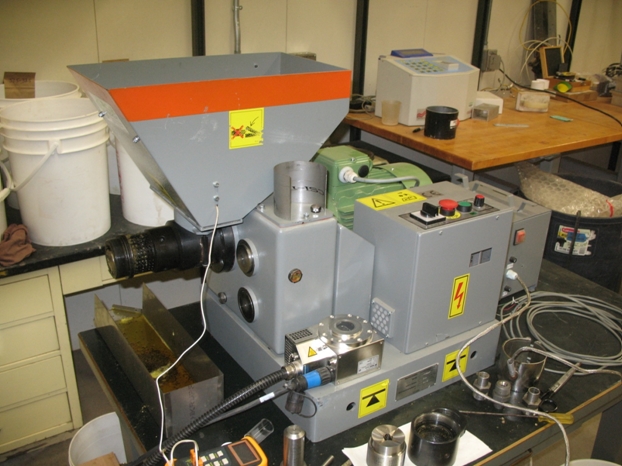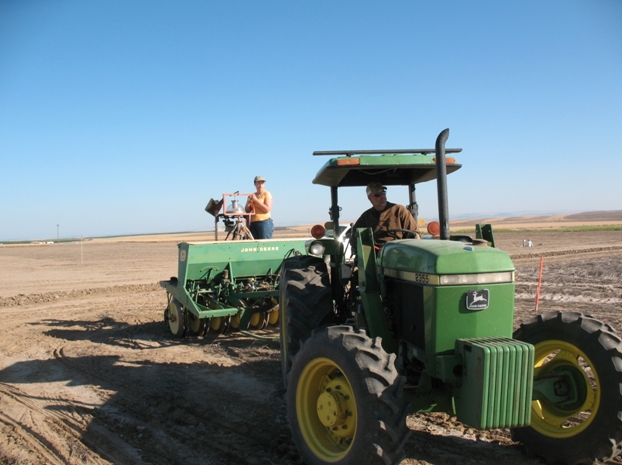Agronomy

Associated Personnel:
- Vacant, Research Agronomist
- Rachel Chambers, Physical Research Technician
- Brett Carter, Agricultural Science Research Technician
Collaborators:
- ARS-CPCRC Scientists
- Andrew Lenssen, Iowa State University
- Patrick Crampton, Agrisoma Biosciences, Inc., Ottawa, ON
- Laj Ahuja, ARS-Ft. Collins, CO
- Brenton Sharratt, ARS-Pullman, WA
- Susan Capalbo, Oregon State University
- Nathaniel Newlands, Agriculture and Agri-Food Canada, Lethbridge, AB
Current Research Projects

Mixed Cereal-oilseed Production in Three-year Rotations
New Brassica lines have been bred for heat and drought tolerance and may enable oilseed production in low rainfall areas of the Columbia Plateau and enhance nutrient and water use efficiencies in wheat-based rotations. Ethiopian mustard (Brassica carinata) is being investigated as a potential rotation crop for intensifying WW-SF. A 6-yr field trial is now underway to generate enterprise budgets on the potential profitability and risk associated with increasing cropping intensity in lower rainfall areas and produce data on the effectiveness of crop intensification in reducing dust emissions. Life cycle assessments informed by agronomic inputs from the field trial will provide information on relative energy and water use efficiencies, waste production, and CO2 emissions of intensified cropping systems over WW-SF.

Remote Sensing of Oilseed Quality and Yield
Satellite remote sensing is routinely used to estimate the field acreage of oilseed crops under production in a region. Near real-time knowledge of spatial variability in oilseed production can improve seed procurement efforts seeking to optimize the flow of feedstock through a crushing facility. This information is also potentially useful for economic interests further downstream such as airline service centers that purchase hydrotreated renewable jet fuel. The objective of this study is to assess the feasibility of using freely available multispectral satellite imagery to produce geographic information about in-season oilseed acreage as well as to efficiently disseminate this information to any interested stakeholder along the supply chain. Small, unmanned aerial systems are being used in conjunction with ground reference measurements to develop mathematical relationships that can be deployed with satellite systems for regional assessment of oilseed quality and yield.

In-line NIR Sensing of Seed Oil Concentration
Spatial variability in seed oil concentration can negatively affect the recovery of oil from the seed at the crushing plant. The objective is to determine how well in-line near infrared (NIR) spectroscopy can determine the seed oil concentration of canola (Brassica napus L.) and whether this information might be used in real-time to adjust a cold press for maximum efficiency. Theoretical fractions of expelled oil and meal, calculated as a function of seed oil concentration and choke setting, show that for each seed oil content value, there is an optimal choke setting that maximizes the volume of oil that can be extracted. In-line oil seed information is being used together with mass flow measurements of seed and oil to compute extraction efficiency and control the choke setting on the press.

Suitability of Oilseed Crops Under Drought Stress
In this project, region-wide comparisons of canola (Brassica napus) are being made to alternative oilseed crops (B. rapa, B. juncea, B. carinata, Sinapis alba, and Camelina sativa) at diverse locations in one mid western US corn-soybean region, three western US wheat-based regions, and one western US irrigated region to determine the best crop for each region and the bio-physical factors that generate this performance. Phenotyping characteristics (e.g., crop height, leaf area index, plant canopy reflectance, and canopy temperature), indicating a genotype’s ability to respond successfully to drought stress, are being measured once per week using hand-held instruments.
